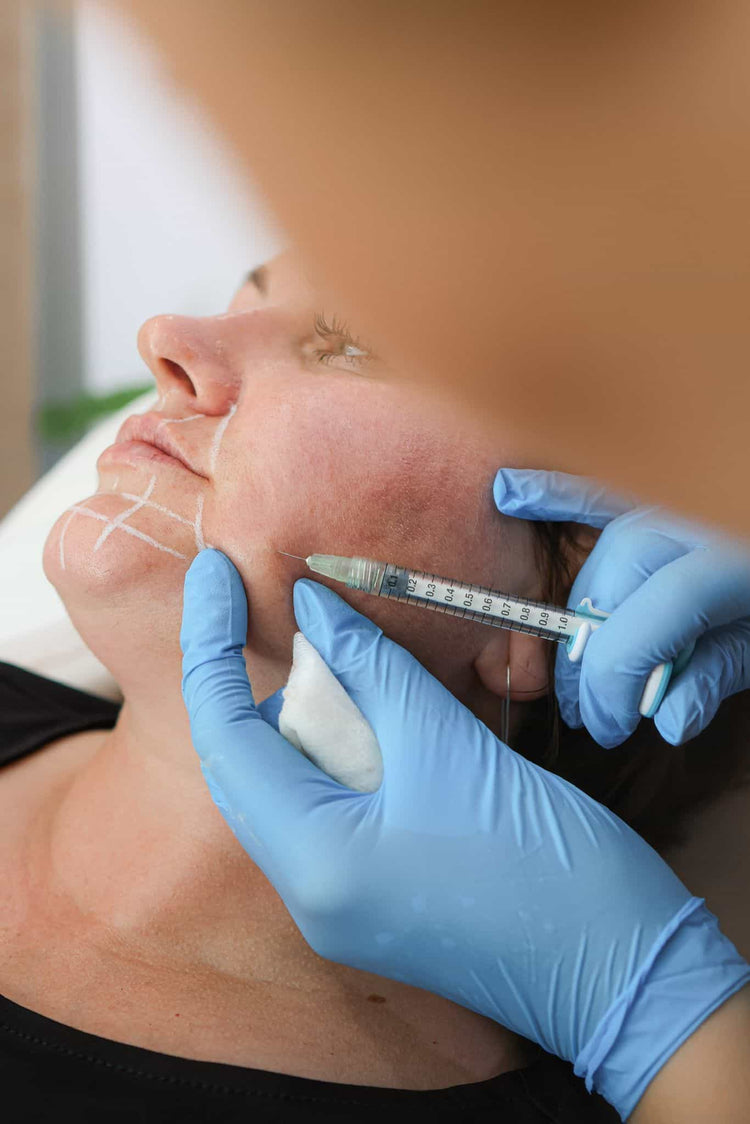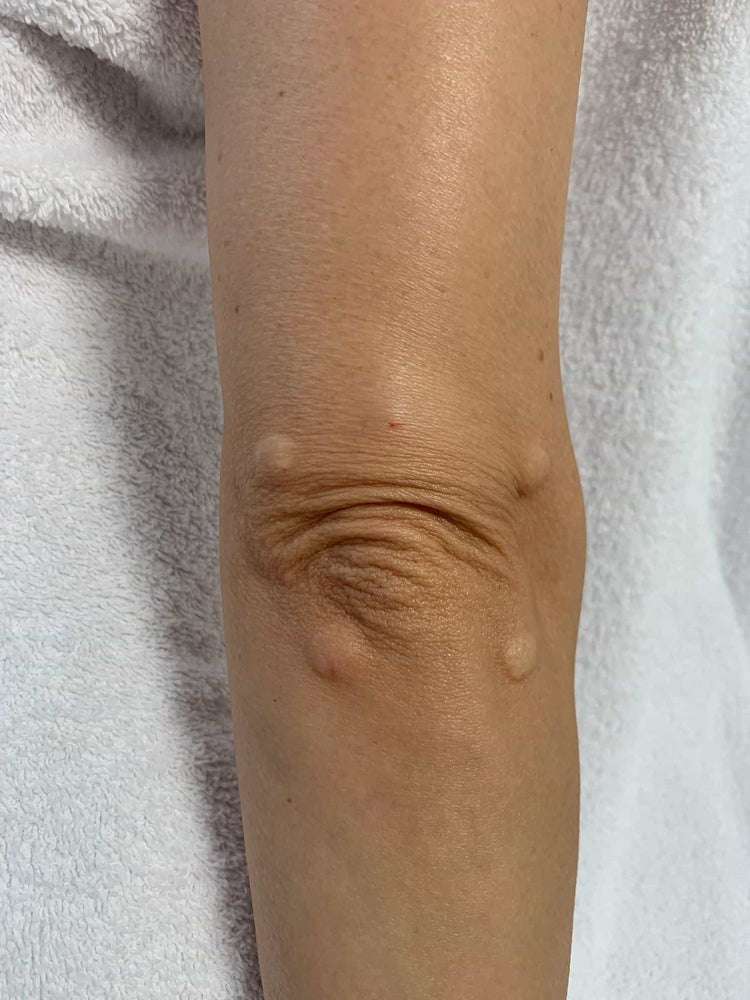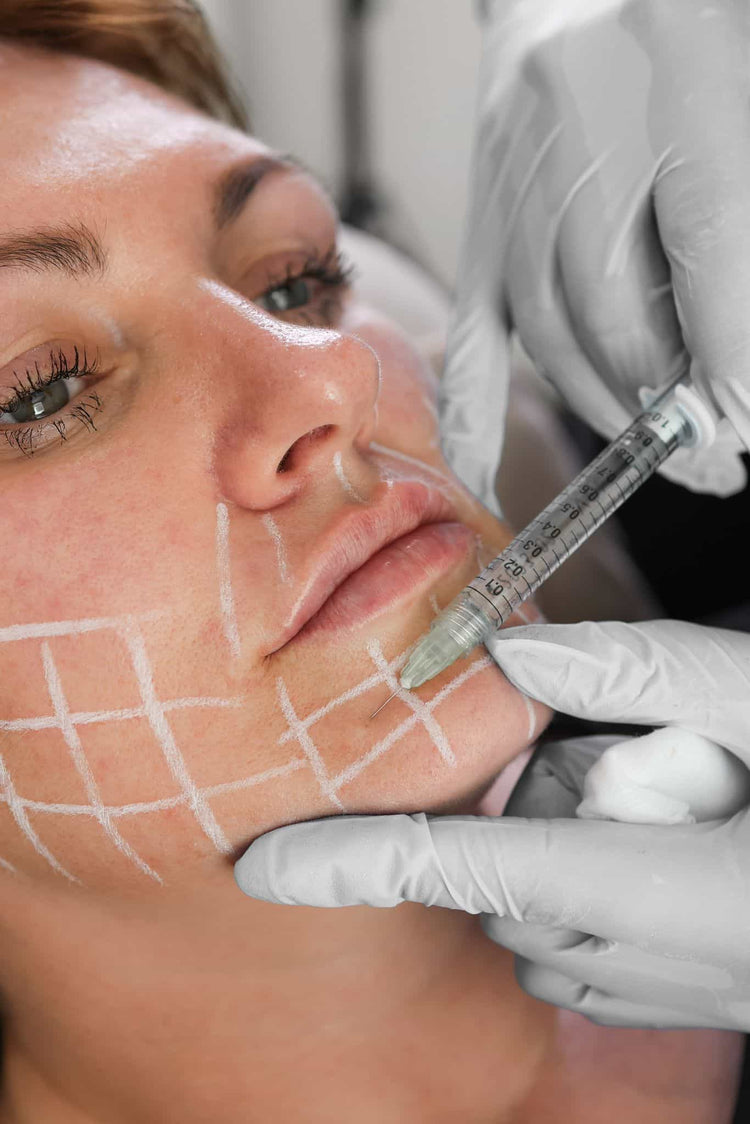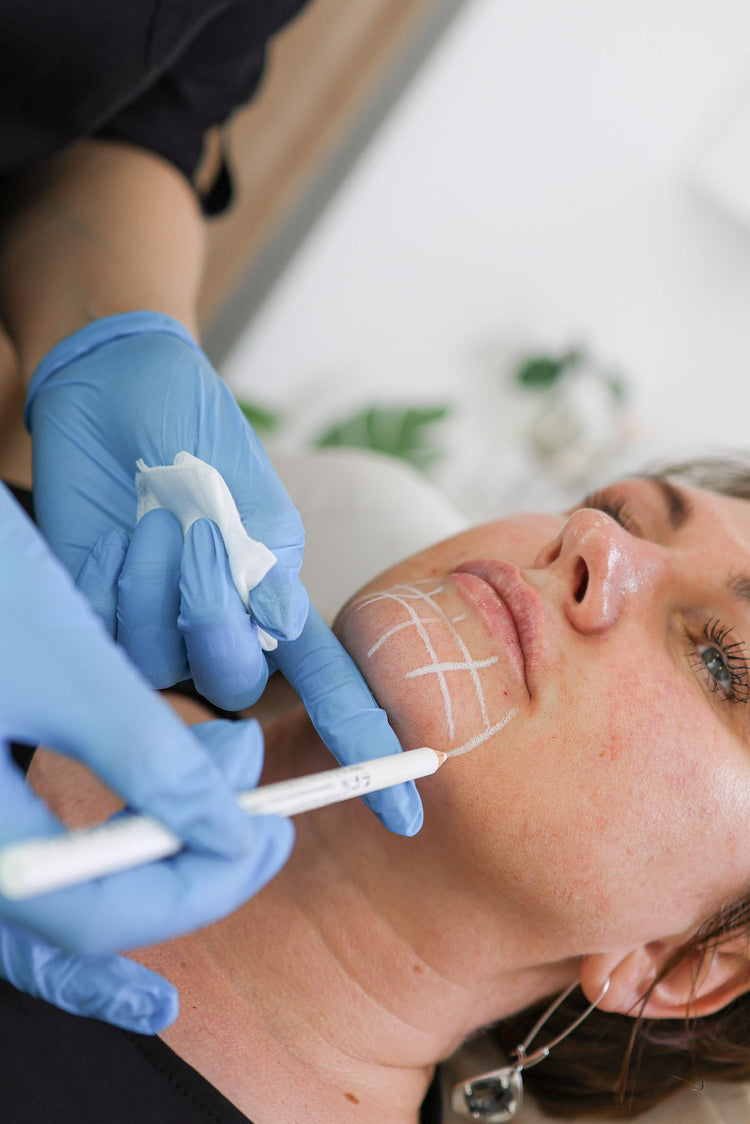Types of Fillers
When it comes to addressing the signs of aging in the lower face, fillers can be a transformative solution.

Hyaluronic Acid Fillers
Fillers are injectables used to restore volume and smooth wrinkles, often targeting areas like the cheeks, jawline, and mouth. These substances come in various types, each with its own properties and benefits.
One of the most popular types of fillers is hyaluronic acid (HA). HA is a naturally occurring substance in the body that helps to hydrate and plump skin. Injectable HA fillers are designed to attract and retain water, effectively increasing volume and smoothing out wrinkles.
Calcium Hydroxylapatite Fillers
Calcium hydroxylapatite (CaHA) fillers are another effective option for addressing lower face wrinkles.
CaHA is a naturally occurring mineral that acts as a scaffolding for collagen production, stimulating the body’s own natural healing processes. This leads to firmer and more lifted skin over time.

Unlike HA fillers which are temporary, CaHA fillers tend to last longer, with results often visible for up to 18 months.
Poly-L-Lactic Acid (PLLA) Fillers
Poly-L-Lactic Acid (PLLA) fillers represent another innovative approach to addressing lower face wrinkles. PLLA is a biodegradable synthetic polymer that stimulates collagen production in a gradual and sustained manner.
Unlike immediate volume-boosting fillers like HA, PLLA works by triggering the body’s own collagen synthesis, resulting in long-lasting skin tightening and rejuvenation. The effects of PLLA fillers typically develop gradually over several months, providing a natural-looking lift that can last for two years or more.
Treatment Process
When it comes to addressing the signs of aging in the lower face, fillers can be a transformative solution. Fillers are injectables used to restore volume and smooth wrinkles, often targeting areas like the cheeks, jawline, and mouth. These substances come in various types, each with its own properties and benefits.
Consultation and Assessment
The treatment process typically begins with a thorough consultation and assessment. During this initial appointment, a qualified practitioner will discuss your aesthetic goals, medical history, and any concerns you may have. A detailed evaluation of your lower face will be conducted to determine the best course of treatment.
Based on the assessment, the practitioner will recommend a suitable filler type and treatment plan. Factors such as the depth and severity of wrinkles, desired outcome, and individual skin characteristics will influence the choice of filler and injection technique.
The actual injection procedure is relatively quick and minimally invasive. A topical anesthetic may be applied to numb the area beforehand. Using a fine needle, the filler is carefully injected into specific target points in the lower face. The practitioner will aim for precise placement to achieve natural-looking results.
After the treatment, you may experience some mild swelling, bruising, or redness at the injection sites. These side effects are typically temporary and resolve within a few days. You can resume most normal activities immediately, but it’s advisable to avoid strenuous exercise and excessive sun exposure for a short period.
Follow-up appointments may be scheduled to monitor your progress and ensure optimal results.
Procedure Details
The choice of filler will depend on individual needs and desired outcomes.

Hyaluronic acid (HA) fillers are commonly used for their ability to instantly add volume and smooth wrinkles. Calcium hydroxylapatite (CaHA) fillers are known for their longer-lasting results and collagen-stimulating properties.
Poly-L-Lactic Acid (PLLA) fillers, on the other hand, offer a gradual and sustained approach to skin rejuvenation by triggering collagen production.
The procedure typically begins with a consultation where a practitioner will discuss your aesthetic goals and assess your suitability for treatment.
During the procedure, a topical anesthetic may be applied to numb the injection area. The practitioner will then use a fine needle to carefully inject the chosen filler into specific points in the lower face, targeting wrinkles and areas lacking volume.
After treatment, you may experience some mild swelling, bruising, or redness, but these side effects usually subside within a few days.
It’s recommended to avoid strenuous activity and excessive sun exposure for a short period post-treatment. Follow-up appointments are often scheduled to monitor your progress and ensure optimal results.
Aftercare Instructions

Aftercare instructions following filler treatment in the lower face are essential for achieving the best possible outcome and minimizing potential side effects.
- Avoid touching or massaging the treated area for at least 24 hours after the procedure. This will help prevent swelling and bruising.
- Apply ice packs wrapped in a towel to the injection sites for 15-20 minutes at a time, several times a day, especially during the first 24-48 hours. This can help reduce inflammation.
- Do not expose the treated area to excessive sun or heat for at least a week. Wear sunscreen with an SPF of 30 or higher daily.
- Avoid strenuous exercise and activities that cause excessive sweating for 24-48 hours following treatment.
- Sleep with your head elevated on an extra pillow for the first few nights to minimize swelling.
- Drink plenty of water to stay hydrated, which can aid in reducing inflammation.
- Follow any specific instructions provided by your practitioner regarding medications, activity restrictions, or wound care.
Benefits of Filler Treatments
When it comes to addressing the signs of aging in the lower face, fillers can be a transformative solution.
Reduced Appearance of Wrinkles
Fillers are injectables used to restore volume and smooth wrinkles, often targeting areas like the cheeks, jawline, and mouth. These substances come in various types, each with its own properties and benefits.
One of the most popular types of fillers is hyaluronic acid (HA). HA is a naturally occurring substance in the body that helps to hydrate and plump skin. Injectable HA fillers are designed to attract and retain water, effectively increasing volume and smoothing out wrinkles.
Calcium hydroxylapatite (CaHA) fillers are another effective option for addressing lower face wrinkles.
CaHA is a naturally occurring mineral that acts as a scaffolding for collagen production, stimulating the body’s own natural healing processes. This leads to firmer and more lifted skin over time.
Unlike HA fillers which are temporary, CaHA fillers tend to last longer, with results often visible for up to 18 months.
Poly-L-Lactic Acid (PLLA) fillers represent another innovative approach to addressing lower face wrinkles. PLLA is a biodegradable synthetic polymer that stimulates collagen production in a gradual and sustained manner.
Unlike immediate volume-boosting fillers like HA, PLLA works by triggering the body’s own collagen synthesis, resulting in long-lasting skin tightening and rejuvenation. The effects of PLLA fillers typically develop gradually over several months, providing a natural-looking lift that can last for two years or more.
Improved Facial Contour
Fillers offer a range of benefits for improving facial contour in the lower face. By adding volume to areas that have lost fullness due to aging, fillers can restore a more youthful and defined appearance.
One significant benefit is the ability to smooth out wrinkles and creases. Fillers work by plumping up the skin, reducing the visibility of fine lines and deeper wrinkles around the mouth, jawline, and chin.
Fillers can also enhance facial structure by subtly lifting and contouring the cheeks, jawline, and lips. This can create a more sculpted and balanced appearance, enhancing natural features.
Another benefit is the improvement in skin texture. By stimulating collagen production, some types of fillers can lead to firmer and smoother skin over time.
Enhanced Skin Elasticity
One key benefit of filler treatments is their ability to enhance skin elasticity. As we age, our skin naturally loses collagen and elastin, the proteins responsible for its firmness and resilience. This loss leads to wrinkles, sagging, and a less youthful appearance. Fillers can help counteract these effects by adding volume and stimulating collagen production.
Choosing a Provider
Choosing a provider for filler treatments in Witley, Surrey requires careful consideration.
Qualifications and Experience
Look for a qualified practitioner who is experienced in administering fillers specifically for the lower face.
A good provider will have extensive training in facial anatomy and aesthetics, ensuring safe and effective treatment.
Inquire about their qualifications and experience with various filler types, as different products may be more suitable for addressing specific concerns.
Don’t hesitate to ask for before-and-after photos of previous patients to gauge the provider’s skills and aesthetic approach.
It is essential to choose a reputable clinic that adheres to strict safety and hygiene standards.
Ensure the clinic uses sterile equipment and follows proper infection control protocols.
A qualified practitioner will prioritize your safety and well-being throughout the entire process.
Before & After Photos
When it comes to choosing a provider for filler treatments in Witley, Surrey, careful consideration is essential. Look for a qualified practitioner experienced in administering fillers specifically for the lower face. A good provider will possess extensive training in facial anatomy and aesthetics, ensuring safe and effective treatment. Inquire about their qualifications and experience with various filler types, as different products may be more suitable for addressing specific concerns. Don’t hesitate to ask for before-and-after photos of previous patients to gauge the provider’s skills and aesthetic approach.
It is essential to choose a reputable clinic that adheres to strict safety and hygiene standards. Ensure the clinic uses sterile equipment and follows proper infection control protocols. A qualified practitioner will prioritize your safety and well-being throughout the entire process.
Patient Reviews
Patient reviews can be valuable insights when choosing a provider for filler treatments in Witley, Surrey.
Online platforms such as Google Reviews, Yelp, and aesthetic medicine forums often feature patient testimonials and feedback about their experiences with specific practitioners and clinics.
Reading through these reviews can provide you with valuable information about the provider’s expertise, communication style, and overall patient satisfaction.
Pay attention to recurring themes or patterns in the reviews.
Look for reviews that mention positive outcomes, natural-looking results, a comfortable experience, and professional service.
However, it’s important to note that online reviews should be taken with a grain of salt.
Some reviews may be biased or exaggerated, while others may reflect individual experiences that are not representative of the average patient outcome.
It’s always a good idea to read a variety of reviews and consider them alongside other factors such as the provider’s qualifications, experience, and approach.
Potential Risks and Side Effects
While filler injections can effectively address lower face wrinkles, it is crucial to be aware of potential risks and side effects. These may include bruising, swelling, redness, tenderness, pain at the injection site, asymmetry, infection, and allergic reactions. Some fillers may also migrate or cause lumps.
Bruising and Swelling
While fillers offer a range of benefits for addressing lower face wrinkles, it is essential to understand potential risks and side effects. Common side effects include bruising, swelling, redness, tenderness, and pain at the injection sites. These are usually temporary and resolve within a few days.
Less common but more serious risks include asymmetry, infection, allergic reactions, and filler migration (where the filler moves from the intended area). It’s important to discuss your medical history and any allergies with your practitioner before undergoing treatment.
Infection
Potential complications, although rare, can occur. These include:
- Infection: As with any injection procedure, there is a risk of infection at the injection site. It’s crucial to follow post-treatment care instructions carefully to minimize this risk.
- Allergic reactions: Some individuals may be allergic to certain filler ingredients. A patch test can sometimes be performed prior to treatment to assess for allergies.
- Asymmetry: If fillers are not injected evenly, it can lead to an asymmetrical appearance. An experienced practitioner will strive for symmetry and balance during the procedure.
- Lumps or bumps: In some cases, small lumps or bumps may form at the injection site. These usually resolve on their own over time but can sometimes require further treatment.
Uneven Results
While fillers offer a range of benefits for addressing lower face wrinkles, it is essential to understand potential risks and side effects. Common side effects include bruising, swelling, redness, tenderness, and pain at the injection sites. These are usually temporary and resolve within a few days.
Less common but more serious risks include asymmetry, infection, allergic reactions, and filler migration (where the filler moves from the intended area). It’s important to discuss your medical history and any allergies with your practitioner before undergoing treatment.
Potential complications, although rare, can occur. These include:
- Infection: As with any injection procedure, there is a risk of infection at the injection site. It’s crucial to follow post-treatment care instructions carefully to minimize this risk.
- Allergic reactions: Some individuals may be allergic to certain filler ingredients. A patch test can sometimes be performed prior to treatment to assess for allergies.
- Asymmetry: If fillers are not injected evenly, it can lead to an asymmetrical appearance. An experienced practitioner will strive for symmetry and balance during the procedure.
- Lumps or bumps: In some cases, small lumps or bumps may form at the injection site. These usually resolve on their own over time but can sometimes require further treatment.
Results from filler treatments can vary depending on individual factors such as skin type, age, and the amount of filler used. While most individuals experience a noticeable improvement in the appearance of lower face wrinkles, it’s important to have realistic expectations.
The results from HA fillers tend to last for several months, typically between 6 and 18 months. CaHA fillers can provide longer-lasting results, often lasting up to 18 months or more. PLLA fillers work gradually over time, with results becoming increasingly noticeable over several months and lasting for two years or longer.
It’s important to note that these are just general guidelines, and individual results may vary.
Cost and Financing Options
The cost of filler treatments in Witley, Surrey can vary depending on several factors, including the type and amount of filler used, the specific area being treated, and the experience and reputation of the practitioner.
Generally, you can expect to pay between £250 and £700 per syringe of filler for lower face wrinkles treatment.
Financing options may be available at some clinics to help spread the cost of treatment over time. These options may include payment plans or financing loans.
It’s always best to consult with a qualified practitioner to discuss your individual needs and get a personalized quote, as well as explore any financing options they may offer.
Book an appointment for stunning lip enhancements with Dr. Laura Geige at It’s Me & You Clinic
- Filler For Lower Face Wrinkles In Witley, Surrey - September 28, 2025
- Downturned Smile Treatment Near Milford, Surrey - September 25, 2025
- Dermal Fillers Near Addington, Surrey - September 22, 2025
